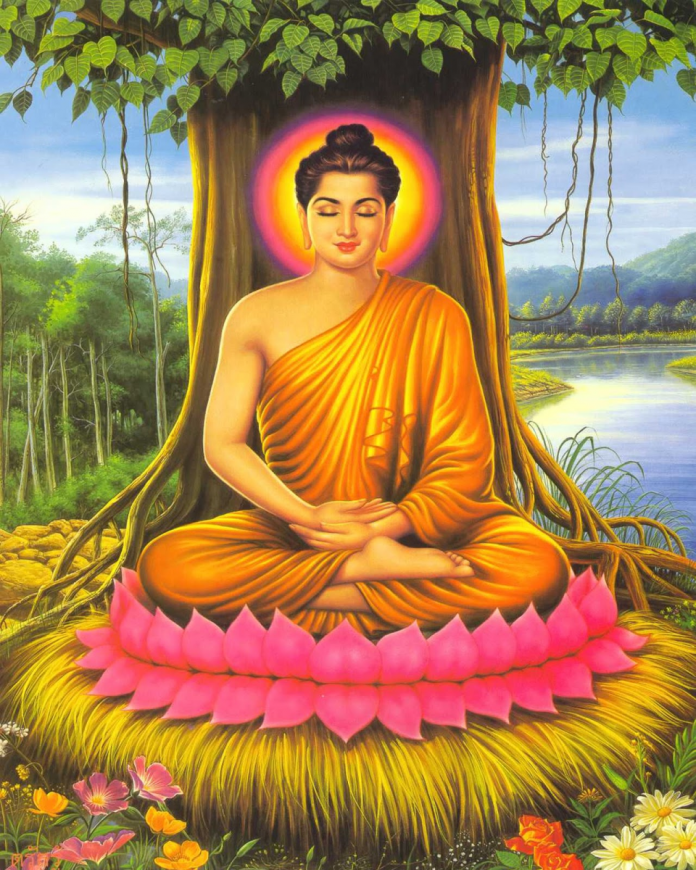Buddhism: New Religion in the Caste System Era
History considers the sixth century B.C. to be a wonderful period. This century has seen the lives and teachings of great intellectuals like Buddha, Mahavira, Heraclitus, Zoroaster, Confucius, and Lao Tse. The two that had the greatest success in terms of changing Indian civilization were Jainism and Buddhism.
Buddhist-related principals
Buddha’s life
- Other names for Buddha include Sakyamuni and Tathagata. He is regarded as Buddhism’s founder. On Vaisaka Purnima in the Lumbini Gardens near Kapilvastu in the sixth century BC, he was born as Siddhartha to Suddhodana, the ruler of the Sakyan republic, and his wife Maya.
- Siddhartha later married Yashodhara and had a son named Rahula. He was unhappy with his opulent lifestyle and worried by the symptoms of illness, ageing, and death he saw in others living in the world.
- He made the decision to leave the palace at the age of 29 in order to find tranquility and a knowledge of the problems in the world.
- In what is now referred to as Bodh Gaya, Buddha acquired enlightenment at the age of 35, once more on Vaisaka Purnima. He spoke his first sermon in front of his first disciples at Sarnath in a deer park.
- At Kusinara, Buddha reached Mahaparinirvana.
- Buddhism-related teachings
- to stay away from extremes in life, such as self-mutilation and harsh asceticism, or addiction to sensual pleasures.
- Buddhism is uninterested in disputes concerning the nature of reality.
- Buddha placed a strong emphasis on moral development that was independent of any universe’s creator.
- The knowledge that life is temporary is the core of Buddhism.
- Buddha appears to have embraced the notion of reincarnation.
- Buddhism’s “four noble truths” are: They represent the suffering and root cause truths.
- Right understanding (Samma ditthi), right thought (Samma sankappa), right speech (Samma vaca), right action (Samma kammanta), right livelihood (Samma ajiva), right effort (Samma vayama), right mindfulness (Samma sati), and right concentration are the eightfold path that leads to nirvana, or the end of suffering (Samma samadhi).
Buddhist Councils
After the death of Buddha, the Buddhist monks or followers met four times, and these gatherings had a number of consequences on Buddhism.
First Buddhist Council: This took place in Rajgriha’s Saptaparni cave in the year 483 BC.
Mahakasyapa presided over the formation of this council.
Ajatshatru of the Haryanka dynasty was the king at the time.
As a result of this gathering, the Buddha’s teachings are split into the Vinaya Pitaka and the Sutta Pitaka. Upali read from the Vinaya Pitaka, and Ananda read from the Sutta Pitaka.
The second Buddhist Council was held in the year 383 BC in Chullavanga, Vaishali.
Sabakami served as the council’s chairman.
The Shishunaga Dynasty’s Kalashoka served as the period’s ruler during this time.
The third Buddhist Council took place in the year 250 BC at Ashokarama Vihar in Patliputra.
Mogaliputta Tissa presided over this council as its leader.
During this time, Ashoka, a member of the Maurya dynasty, ruled as monarch.
Abhidhamma, the third instalment of the Tripitaka, was written.
It was decided to send missionaries to other continents in order to introduce Buddhism to those nations.
The fourth Buddhist council took place in 72 AD in Kundala Van, Kashmir.
Vasumitra served as the council’s chairman, and Ashwaghosha served as vice-chairman.
The Kushan dynasty’s Kanishka presided over this council.
Buddhists are divided into Hinayana and Mahayana schools.
Buddhism sects
- Hinayana (i.e. the smaller vehicle) (i.e. the lesser vehicle)
- Hinayana adherents held fast to the fundamental teachings of Buddha.
- Through self-control and meditation, they sought salvation.
- They disapproved of idol worship and preferred the Pali language.
- It is often referred to as the “Southern Buddhist Religion” since it was most prevalent in the southern regions of India, such as Sri Lanka, Burma (Myanmar), Thailand, Java, Laos, etc.
- Hinayana is divided into two subsects: Vaibhasika and Sautantrika.
- The followers of the Mahayana (also known as the Greater Vehicle) sect believed that Buddha existed in heaven.
- Through the mercy of Buddha and Bodhisattva, they sought salvation.
- They had a preference for the Sanskrit language and idol worship.
- It is often referred to as the “Northern Buddhist Religion”.
Mahayana (i.e. the Greater Vehicle)
- This sect’s adherents held a belief in Buddha’s heavenly nature.
- Through the mercy of Buddha and Bodhisattva, they sought salvation.
- They had a preference for the Sanskrit language and idol worship.
- Due to its dominance in countries primarily in the north of India, such as China, Korea, Japan, Taiwan, etc., it is also known as “Northern Buddhist Religion.”
- Madhyamika/Shunyavada and Yogachar/Vijnanavada are two subsets of the Mahayana.
- Nagarjuna, the Madhyamika and Sunyavada founder.
- Maitreya Nath, the creator of Yogacara/Vijnanavada, and his student Asanga.
Vajrayana
- The followers of this sect hold that obtaining the magical ability they refer to as Vajra is the only way to achieve salvation.
- In Bengal and Bihar, it gained popularity.
- They freely ate foods that are banned in other sects, like meat, fish, wine, and other thing
Master Your Coding Skills with BootSelf AI
If you're looking to enhance your coding abilities and upskill in artificial intelligence, look no further than the BootSelf AI app. This innovative platform provides AI-based coding lessons that are tailored to your individual learning pace.
Available on both iOS and Android, you can download the BootSelf AI app and start mastering coding skills today:





